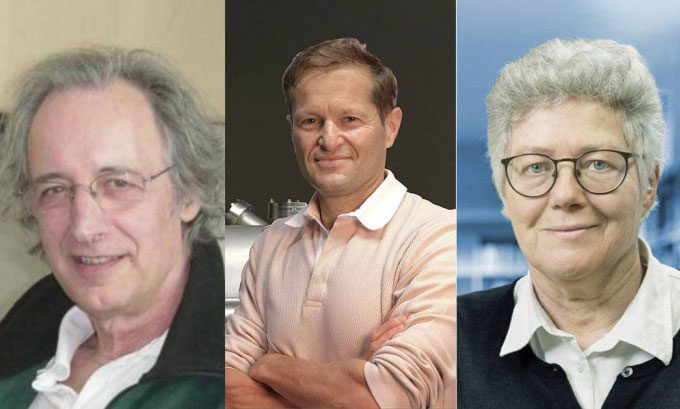The 2023 Nobel Prize in Physics has been awarded to three scientists: Pierre Agostini, Ferenc Krausz, and Anne L’Huillier, for their research related to the behavior of electrons within atoms and molecules.
The Royal Swedish Academy of Sciences announced the winners Pierre Agostini (55 years old), Ferenc Krausz (61 years old), and Anne L’Huillier (65 years old) of the 2023 Nobel Prize in Physics for their experimental techniques that produce attosecond light pulses to study electron dynamics in matter at 4:45 PM on October 3 (Hanoi time).

Three scientists Pierre Agostini, Ferenc Krausz, Anne L’Huillier receive the 2023 Nobel Prize in Physics. (Photo: CNN)
Pierre Agostini is a professor at Ohio State University in Columbus, USA. Ferenc Krausz is a professor at Ludwig Maximilian University of Munich, Germany. Anne L’Huillier is a professor at Lund University, Sweden.
The research conducted by these three scientists has demonstrated how to create extremely short light pulses that can be used to measure very rapid processes, in which electrons move or change energy. Their contributions have helped explore processes that occur so quickly that they were previously untraceable.
In the world of electrons, changes occur in less than an attosecond (1 attosecond is equal to 1×10⁻¹⁸ seconds – an incredibly brief duration). The experiments conducted by these scholars produced light pulses short enough to be measured in attoseconds, thereby showing that these pulses can be used to capture images of processes occurring inside atoms and molecules.
In 1987, Anne L’Huillier discovered various different resonant frequencies of light when she transmitted infrared laser light through inert gas. Each resonant frequency corresponds to a light wave with a specific number of cycles in the laser light. They are generated by the interaction of laser light with atoms in the gas, providing additional energy to certain electrons. This energy is then emitted as light. L’Huillier continued to explore this phenomenon, laying the groundwork for subsequent breakthroughs.
In 2001, Pierre Agostini successfully produced and studied a series of continuous light pulses, each lasting only 250 attoseconds. During this same period, Ferenc Krausz worked on a different type of experiment, successfully isolating a single light pulse lasting 650 attoseconds.
The contributions of this year’s Nobel laureates enable the study of processes occurring rapidly enough to have been previously untraceable.
“Now we can open the door to the world of electrons. Attosecond physics gives us the opportunity to understand the mechanisms governed by electrons. The next step will be to use them,” said Eva Olsson, Chair of the Nobel Committee for Physics.

This research has potential applications in various fields. One potential application of electron particle research is in semiconductor manufacturing. Attosecond pulses can also be used to identify different molecules, for example, in medical diagnostics.
The Nobel Prize in Physics is the second award announced this year, following the Nobel Prize in Physiology or Medicine. On the afternoon of October 2, the Royal Swedish Academy of Sciences awarded the mRNA vaccine research against Covid-19 by scientists Katalin Kariko and Drew Weissman with this prize.
This year’s Nobel laureates will receive a cash prize of 11 million Swedish kronor (approximately $986,000), an increase of one million Swedish kronor compared to 2022.
The 2022 Nobel Prize in Physics was awarded to three scientists Alain Aspect (France), John F. Clauser (USA), and Anton Zeilinger (Austria) for their experiments with entangled photons, establishing violations of Bell’s inequalities, and pioneering work in quantum information science.
- mRNA vaccine research wins the 2023 Nobel Prize in Physiology or Medicine
- 2023 Nobel Prize in Chemistry honors nanotechnology research
- Norwegian author Jon Fosse wins the 2023 Nobel Prize in Literature
- Iranian women’s rights activist wins the 2023 Nobel Peace Prize
- 2023 Nobel Prize in Economic Sciences honors American female professor
- Why were many concubines infertile in ancient times? The heartbreaking truth was revealed only after autopsy!


















































